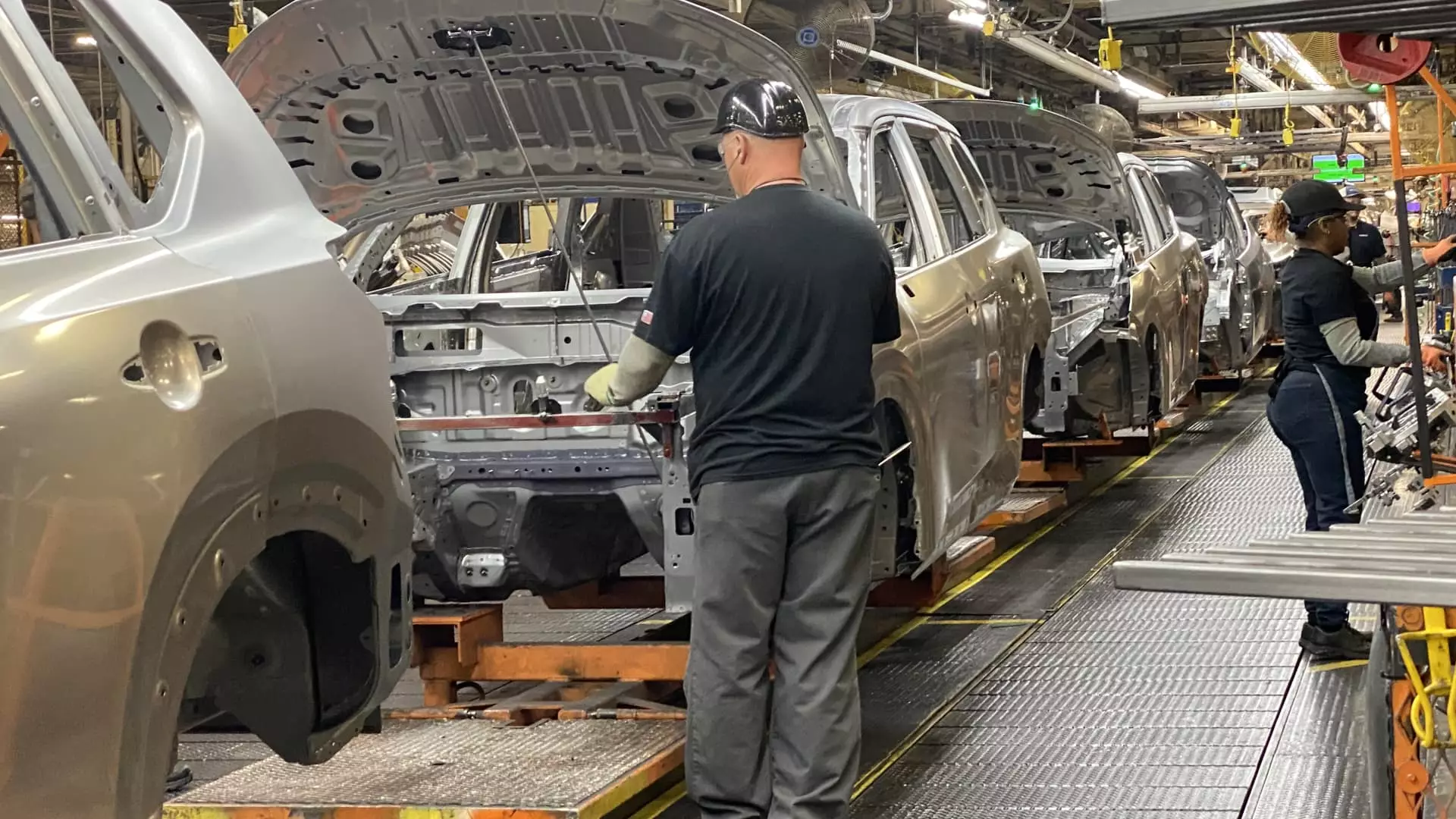Donald Trump’s 25% tariffs on imported vehicles and parts represent a radical shift in automotive policy that could thrust the industry into turmoil. Analysts have issued chilling projections, foreseeing a staggering drop in vehicle sales—potentially by as many as two million units each year across the U.S. and Canada. With the average price of new vehicles inching toward an unsettling $50,000, these tariffs threaten not only to extend the price premium but also to exacerbate issues surrounding affordability and consumer access. If the automotive industry faces a monumental increase in costs—as some analysts estimate could top over $100 billion annually—consumers are likely to be pinched, with higher prices affecting purchasing power across the board.
To some, these policies may appear protectionist, aimed at fortifying U.S. manufacturers; however, the unintended consequences are catastrophic. Not only will they drive up costs for the average buyer, but it is also forecasted that automakers will struggle to sell cars at these inflated prices, likely leading to extensive layoffs and a broader economic downturn. For the consumer, these tariffs do not merely symbolize temporary spikes but hint at a lasting structural change in the automobile market—a transformation that could leave many feeling trapped in a circle of perpetual inflation.
Structural Challenges: A Shaky Foundation for Manufacturing
The consequences extend far beyond mere price hikes. The core structure of how vehicles are manufactured is poised for a significant makeover. Felix Stellmaszek, who leads automotive and mobility endeavors at the Boston Consulting Group, claims we are witnessing a “structural shift.” Such statements signal not only immediate difficulties for manufacturers but also long-term adaptations that could redefine the landscape of automotive production in this country. As companies scramble to navigate newly established bottlenecks in supply chains and production processes, innovation may either stagnate or regress entirely.
Those relying on imported parts are even more vulnerable. A substantial number of parts critical for assembling vehicles are sourced from abroad. The imminent tariffs on automotive parts, set to roll out shortly, compound the mounting complexity manufacturers already face. Costly adjustments will ripple through the entire supply chain—worsening the conditions under which both U.S. and foreign automobile manufacturers operate. Consequently, American consumers will not only pay more but may also find a narrower selection of vehicles to choose from.
Consumer Sentiment: A Rapid Decline in Trust
Consumer sentiment is plummeting, and recent statistics reflect this dismal reality. With inflation rates reaching their highest since 1981, the average consumer’s confidence is dampening. More people are beginning to question whether acquiring a new vehicle is possible or even sensible in this financial climate. Financial strategies are becoming increasingly precarious as auto loan rates remain near historical peaks, touching over 9.64% for new cars and nearing 15% for used ones.
This loss of trust in the automotive market could exhibit daunting long-term social implications as consumers rethink their priorities regarding personal financing and asset ownership. The reluctance to spend on major purchases like vehicles often leads to a chain reaction that stifles economic momentum—ultimately prompting a vicious cycle of economic stagnation.
The Ripple Effect: Broader Economic Repercussions
The fallout from the tariff-induced crisis isn’t encapsulated within the walls of car dealerships or manufacturing plants; rather, it permeates the broader economy. Economists have warned that a dramatic decrease in vehicle sales could evoke a ripple effect, manifesting in various sectors reliant on automotive health. Industries tied to auto production—from steel suppliers to service centers—may also experience declines, further impeding job creation and small business sustainability. As citizens feel the pinch in their pockets, discretionary spending may contract, stifling growth across a wide array of markets and leading to a bleak financial outlook.
Tragically, this cycle is not merely a short-lived struggle punctuated by fleeting price increases; it is a fundamental threat to the competitive liveliness of the U.S. economy. As manufacturers implement essential cuts to profit margins and labor, the long-term bitterness surrounding tariff decisions could foster increased resentment among the American populace toward government policy and its effectiveness.
Innovative Solutions or Destructive Policies?
While some argue that tariffs provide a much-needed lifeline for domestic manufacturing, it is increasingly pertinent to scrutinize the consequences of this interventionist approach. Companies are teetering on the brink as they attempt to balance between passing costs onto consumers and absorbing them within their margins. The ongoing uncertainty regarding product availability and pricing will inevitably lead to a marked decrease in brand loyalty, as consumers search for alternatives that might not be subject to punitive tariffs.
Ultimately, the automobile sector stands at a crossroads, forced to reckon with the dual pressures of rising costs and deteriorating consumer confidence. Rather than embarking on a path that breeds hostility and stagnation, it would benefit the industry, and the economy as a whole, to embrace forward-thinking policies that promote sustainable growth and innovation rather than punitive measures that harm the very stakeholders they aim to protect.

